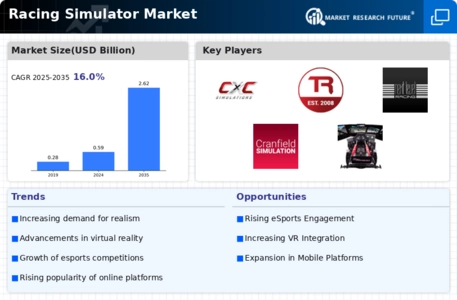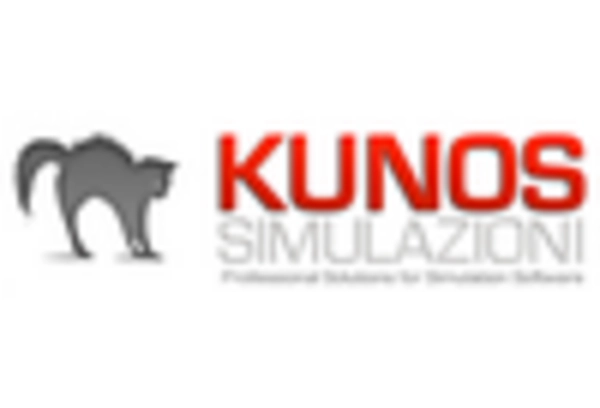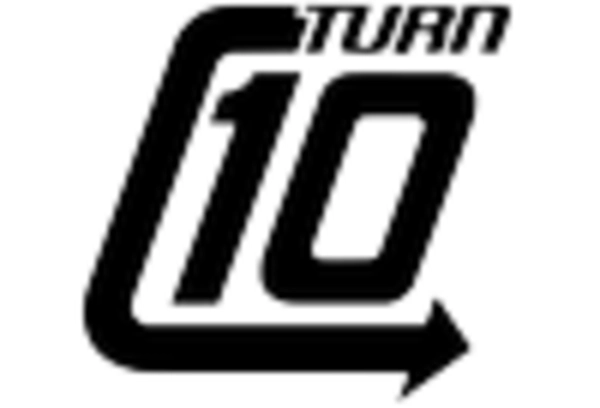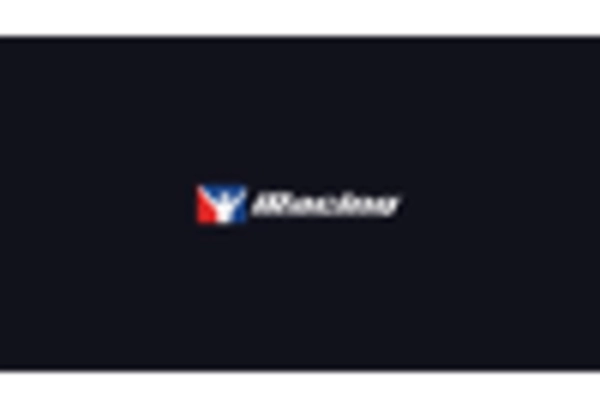Rise of eSports in Racing Simulator Market
The Racing Simulator Market is witnessing a notable rise in eSports, which has become a driving force behind its growth. Competitive racing events, often streamed online, attract large audiences and foster community engagement. This trend has led to increased investment in racing simulator platforms, as companies seek to capitalize on the popularity of eSports. Data suggests that the eSports market is expected to reach substantial revenue figures, with racing games forming a significant segment. The integration of online multiplayer features in racing simulators allows players to compete globally, enhancing the appeal of these products. As eSports continues to gain traction, it is anticipated that the Racing Simulator Market will benefit from heightened visibility and participation, potentially leading to new revenue streams and partnerships.
Increased Investment in Racing Simulator Market
Investment in the Racing Simulator Market is on the rise, driven by both established companies and new entrants. This influx of capital is primarily directed towards research and development, aimed at enhancing product offerings and expanding market reach. Notably, venture capital firms are increasingly interested in gaming technologies, including racing simulators, as they recognize the potential for high returns. Data indicates that the overall gaming industry is projected to grow, which bodes well for the Racing Simulator Market. Furthermore, partnerships between hardware manufacturers and software developers are becoming more common, facilitating the creation of integrated solutions that enhance user experience. As investment continues to flow into this sector, it is likely that innovation will accelerate, leading to a more competitive landscape.
Diverse User Demographics in Racing Simulator Market
The Racing Simulator Market is characterized by a diverse user demographic, which plays a crucial role in its expansion. The appeal of racing simulators extends beyond traditional gamers to include automotive enthusiasts, professional drivers, and casual users. This broad spectrum of potential customers indicates a growing market base. Recent studies show that the age range of users spans from teenagers to adults in their 40s, suggesting that marketing strategies must cater to various preferences and interests. Additionally, the increasing accessibility of racing simulators through affordable hardware and software options has attracted a wider audience. As the user demographic continues to diversify, the Racing Simulator Market is likely to adapt its offerings to meet the varying needs of its consumers, thereby fostering further growth.
Technological Advancements in Racing Simulator Market
The Racing Simulator Market is experiencing a surge in technological advancements that enhance user experience and realism. Innovations in graphics, physics engines, and hardware integration are pivotal. For instance, the introduction of virtual reality (VR) and augmented reality (AR) technologies has transformed how users engage with racing simulators. These technologies provide immersive experiences that closely mimic real-life racing scenarios. Furthermore, advancements in force feedback systems and motion simulation technology contribute to a more authentic driving experience. According to recent data, the market for VR in gaming is projected to grow significantly, indicating a strong correlation with the Racing Simulator Market. As technology continues to evolve, it is likely that the demand for high-fidelity racing simulators will increase, attracting both casual gamers and professional racers.
Growing Popularity of Sim Racing Events in Racing Simulator Market
The growing popularity of sim racing events is significantly influencing the Racing Simulator Market. These events, which often feature professional drivers and high-stakes competitions, have garnered substantial attention from both participants and spectators. The rise of platforms that host these events has created new opportunities for engagement and monetization. Recent statistics indicate that viewership for sim racing events has increased dramatically, reflecting a shift in how racing is perceived in the digital age. This trend not only boosts sales of racing simulators but also encourages manufacturers to invest in high-quality products that meet the demands of competitive racing. As the interest in sim racing continues to grow, it is expected that the Racing Simulator Market will evolve, potentially leading to new formats and innovations that cater to this expanding audience.


















Leave a Comment